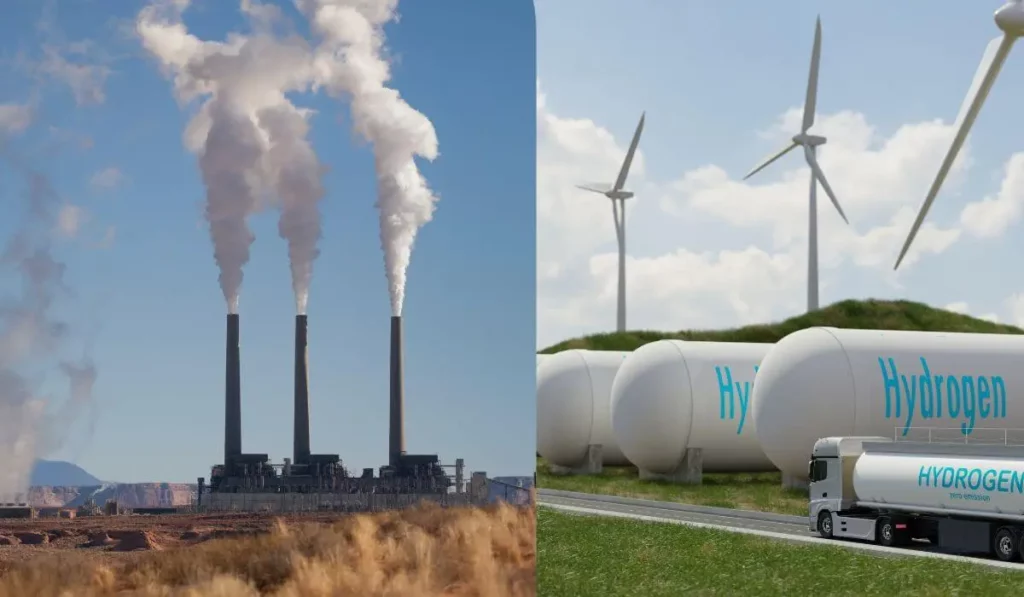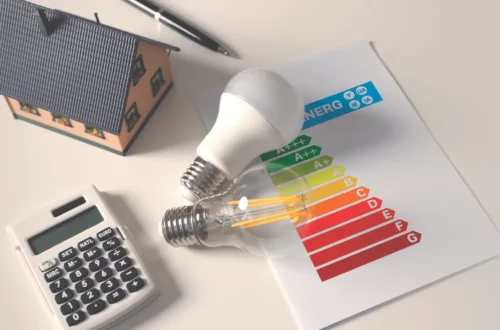Renewable Energy vs Fossil Fuels: Which One is Better?

Are you ready to dive into the fascinating world of energy sources? Imagine a world powered entirely by renewable energy – cleaner air, healthier ecosystems, and a sustainable future for generations to come. On the other hand, fossil fuels have been the backbone of our energy industry for centuries, fueling progress and economic growth. But at what cost?
In this article, we’ll unravel the pros and cons of renewable energy and fossil fuels, offering you a comprehensive comparison to help you make informed decisions about the energy we rely on. From environmental impact to economic considerations, we’ll examine how these energy sources shape our world. By the end, you’ll gain a deeper understanding of which energy source holds more promises for a sustainable future.
Introduction to Renewable Energy vs Fossil Fuels
Renewable energy and fossil fuels are two major players in the energy industry, each with its own set of advantages and disadvantages. In this section, we will provide an overview of these energy sources and the aim of comparing them.
Renewable energy refers to energy derived from natural resources that are constantly replenished, such as sunlight, wind, and water. On the other hand, fossil fuels are formed from the remains of ancient plants and animals, such as coal, oil, and natural gas. While renewable energy sources are considered clean and sustainable, fossil fuels are finite and contribute to environmental issues such as air pollution and climate change.
The purpose of comparing renewable energy and fossil fuels is to understand their impact on the environment and economy. By analyzing their pros and cons, we can evaluate which energy source holds more promise for a sustainable future.
In the following sections, we will go deeper into the differences between renewable energy and fossil fuels, their dominance in energy generation, growth trends, cost competitiveness, environmental implications, and more. By exploring these aspects, we aim to provide readers with a comprehensive understanding of the strengths and weaknesses of both energy sources. So, let’s dive in and unravel the intricacies of renewable energy and fossil fuels.
The Difference Between Renewable Energy and Fossil Fuels
Renewable energy and fossil fuels are the two primary sources of energy that power our world. However, they differ significantly in terms of their sources, extraction methods, and environmental impact.
Renewable Energy:
Renewable energy refers to energy derived from sources that are naturally replenished, such as sunlight, wind, water, and geothermal heat. Unlike fossil fuels, which are finite and will eventually be depleted, renewable energy sources are virtually inexhaustible.
Sources:
1. Solar Energy: Harnessing the power of the sun through solar panels or concentrated solar power systems.
2. Wind Energy: Capturing the kinetic energy of the wind using wind turbines.
3. Hydropower: Utilizing the force of flowing or falling water through dams or turbines.
4. Geothermal Energy: Tapping into the Earth’s heat from geothermal reservoirs or hot springs.
5. Biomass Energy: Converting organic matter, such as crops, wood, and waste, into usable energy.
Fossil Fuels:
Fossil fuels, on the other hand, are non-renewable resources formed over millions of years from the remains of ancient plants and animals. They include coal, oil, and natural gas.
Extraction Methods:
1. Coal: Mining and excavating coal from underground mines or strip mines.
2. Oil: Extracting crude oil from underground reservoirs through drilling and pumping.
3. Natural Gas: Extracting natural gas alongside oil or from dedicated natural gas wells.
Fossil fuels are known for their high energy density, making them efficient for energy production. However, their combustion releases carbon dioxide and other greenhouse gases, contributing to climate change.
Renewable energy sources harness the power of natural resources that are replenished over time, while fossils fuels are finite resources that release harmful emissions when burned. Understanding the differences between these energy sources is crucial in realizing the potential for a sustainable and cleaner future.
Fossil Fuels Dominate Energy Generation in the US
Fossil fuels have long been the primary source of energy in the United States, accounting for a significant portion of the country’s energy generation. Despite the growing interest in renewable energy, fossil fuels continue to dominate the sector due to their established infrastructure and widespread availability.
The Status Quo
– Coal: Historically, coal has been the leading fossil fuel for electricity generation in the US. Its abundance and low cost have made it an attractive option for power plants. However, concerns about carbon emissions and air pollution have led to a decline in coal’s share of the energy mix.
– Natural Gas: Natural gas has emerged as the leading fossil fuel in recent years, surpassing coal in terms of energy generation. Its cleaner burning properties and abundant supply have made it a popular choice, especially for electricity generation.
– Petroleum: While petroleum plays a significant role in transportation, its contribution to the overall energy generation is relatively small.
The Challenges and Benefits
Despite their dominance, fossil fuels face challenges in the form of environmental impact and finite resources. The combustion of fossil fuels releases greenhouse gases and contributes to climate change. Additionally, the extraction and transportation of fossil fuels can have detrimental effects on ecosystems.
However, fossil fuels offer certain benefits such as a reliable energy source and established infrastructure. The current energy generation system heavily relies on fossil fuels, and transitioning to renewable energy sources would require significant investments and a comprehensive infrastructure overhaul.
An Overview of the Diverse Energy Sources Powering the United States
The United States relies on a diverse portfolio of energy sources for its electricity generation. These sources can be broadly categorized into renewable and fossil fuel-based.
Fossil Fuels:
1. Coal: Historically, coal has played a significant role in the US energy mix. However, due to concerns about carbon emissions and environmental impact, its use has been on the decline.
2. Natural Gas: Natural gas has emerged as a cleaner alternative to coal. It is abundant in the US and has become the leading source of electricity generation. Natural gas power plants are more flexible, efficient, and produce fewer emissions compared to coal.
3. Petroleum: Petroleum is primarily used in the transportation sector rather than electricity generation. However, with the growing interest in electric vehicles and the push for renewable energy, petroleum’s role in electricity generation has diminished.
Renewables:
1. Wind Power: Wind farms have seen significant growth in recent years, especially in regions with favorable wind conditions. The US is one of the largest producers of wind energy globally.
2. Solar Power: The falling costs of solar panels and government incentives have spurred the development of solar power projects throughout the country. Solar energy production has been steadily increasing.
3. Hydropower: Hydropower has long been a reliable source of renewable energy in the US. Many dams and hydroelectric power plants generate electricity from flowing water, contributing to the energy mix.
4. Nuclear Power: Although not technically a renewable source, nuclear power provides a significant portion of the US energy supply. Nuclear reactors produce large amounts of electricity while emitting virtually no greenhouse gases.
5. Biomass: Biomass involves converting organic materials into energy. It includes sources like wood, agricultural residues, and dedicated energy crops.
While fossil fuels have historically dominated US energy generation, the landscape is shifting. The growth of renewable energy sources, such as wind and solar power, is rapidly gaining momentum. As concerns about climate change and the need for sustainable energy solutions increase, the US is transitioning toward a more diverse and clean energy future.
The Surging Growth of Renewable Energy
Renewable energy sources are experiencing a significant surge in growth, outpacing the slower expansion of fossil fuels. This shift indicates a promising trend towards a more sustainable and environmentally friendly energy future.
Increasing Market Share
Renewable energy has been making substantial strides in capturing a larger market share in recent years. According to the International Energy Agency (IEA), renewable sources accounted for 28% of global electricity generation in 2020, surpassing coal’s share for the first time. This growth can be attributed to advancements in technology, falling costs, and increased awareness of the environmental impacts of fossil fuels.
Rapid Growth in Capacity
The past decade has witnessed a remarkable boom in renewable energy capacity installations. Solar energy, for example, has experienced a rapid pace of adoption due to its scalability and declining costs. In 2020 alone, solar power capacity increased by 127 gigawatts worldwide. Wind power has also seen substantial growth, with a 111 gigawatt increase during the same period.
Energy Transition Initiatives
Many countries and regions have set ambitious renewable energy targets and implemented energy transition initiatives to curb the use of fossil fuels and promote clean energy alternatives. These efforts aim to reduce greenhouse gas emissions, combat climate change, and ensure a sustainable energy future. Governments, businesses, and individuals are increasingly recognizing the importance of transitioning to renewable energy for a cleaner and healthier planet.
Economic Opportunities
The growth of renewable energy not only benefits the environment but also presents economic opportunities. The renewable energy sector has become a significant driver of job creation, innovation, and investment. It offers a promising avenue for economic growth while addressing environmental concerns. As renewable energy technologies continue to advance, their cost-competitiveness with fossil fuels is expected to further improve, making the transition to clean energy even more attractive.
Also read: Top Renewable Energy Sources for a Better Future
The Cost Competitiveness of Renewable Energy
Renewable energy sources, such as solar and wind, have been rapidly gaining ground in the global energy market. One of the key advantages of renewables is their cost competitiveness compared to fossil fuels in certain contexts.
Increasing Cost Competitiveness
Over the past decade, the cost of renewable energy technologies has significantly decreased. The mass production of solar panels and wind turbines has led to economies of scale, making renewable energy more affordable.
Falling Solar Costs
Solar power, in particular, has become increasingly cost-effective. Technological advancements, improved manufacturing processes, and streamlined installation methods have contributed to the declining costs of solar panels. In fact, the cost of solar has dropped by over 80% since the start of the industrial revolution.
Competitive Wind Power
Similarly, the cost of wind power has also seen a significant decline. The latest wind turbines are more efficient and can produce more energy with the same amount of wind compared to older models. This, coupled with the economies of scale and improved manufacturing, has made wind power increasingly cost-competitive.
Government Support and Incentives
Government incentives and policies have played a crucial role in making renewables more financially viable. Subsidies, tax benefits, and grants provided by governments at various levels have helped drive down the costs of renewable energy generation.
Economic Benefits of Renewables
In addition to their cost competitiveness, renewables offer other economic advantages. They create job opportunities in the renewable energy industry, contribute to local economic growth, and reduce reliance on imported fossil fuels, thereby improving energy security.
While renewables can be cost-effective in the long run, it’s important to note that the levelized cost of renewable energy generation varies depending on factors such as resource availability, location, and the specific technology used.
As the world transitions towards a more sustainable and clean energy future, the cost competitiveness of renewables will continue to improve, making them a favorable choice for both the environment and the economy.
Also read: The Complete Guide to Powering Your Home with Renewable Energy
Environmental Benefits of Renewable Energy
Renewable energy sources offer significant environmental benefits compared to fossil fuels. By harnessing the power of wind, sun, water, and other renewable resources, we can significantly reduce greenhouse gas emissions and air pollution.
Reduced Greenhouse Gas Emissions
One of the major advantages of renewable energy is its minimal contribution to greenhouse gas emissions. Unlike fossil fuels, which release carbon dioxide and other harmful gases when burned, renewable energy sources produce little to no emissions during operation. This reduction in greenhouse gas emissions helps mitigate the effects of climate change and contributes to a more sustainable future.
Decreased Air Pollution
In addition to reducing greenhouse gas emissions, renewable energy also helps combat air pollution. Fossil fuels release harmful pollutants such as sulfur dioxide, nitrogen oxide, and particulate matter into the air, which have detrimental effects on human health and the environment. Renewable energy, on the other hand, produces clean power without emitting these harmful pollutants, promoting cleaner and healthier air quality.
A Path Towards Sustainability
Investing in renewable energy enables us to shift away from fossil fuel dependence and move towards a more sustainable energy future. By embracing clean energy alternatives, we can reduce our reliance on finite fossil fuel resources and minimize the environmental impact associated with extraction and combustion. Renewable energy offers a sustainable path to meet our energy needs while preserving the planet for future generations.





